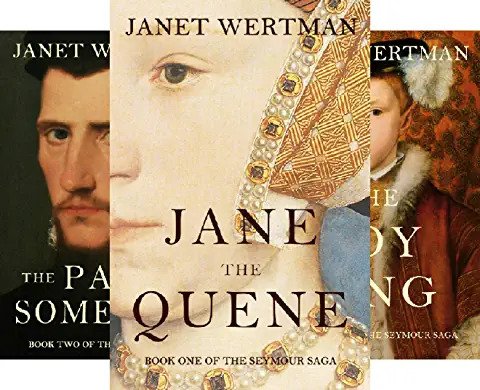
Thank you all for being part of my Tudor world; thank you for your feedback and shares. I wish you a happy, healthy, and meaningful new year.
In honor of the occasion, I want to take us back to New Year’s Day 1529, the day on which presents would have been exchanged at the Tudor court. I know you all know about the Gift Roll (that list of extravagant exchanges between the monarch and the courtiers) – if you don’t, I’ve talked about it before, and so have many others. But I want to get much more granular: I want to talk about the Tudor version of tipping your postal delivery person and other people who offer their service throughout the year – because that was when the practice began! The following is a list of the “Rewards” given to the people who did the actual work at court. As you read it, I want you to pay attention to two things: first, that several of the people on this list also gave presents TO the King (several gunners gave him perfumed gloves); second, that Henry didn’t just give presents to his own servants, he also gave gifts to the servants of his courtiers (gotta give him credit for that one).
Without further ado, the list compiled by the Treasurer of the Chamber of the tips Henry gave in 1529 (I decided not to clean up the language much – but I did include some translations in parentheses):
To the heralds, the King’s trumpets, marshals of the Hall, the King’s watch on New Year’s Eve, the porters, the King’s old sackbuts (trombonists), the pages of the Chamber, the still minstrels, the King’s dromslades (drummers), and the five new sackbuts (trombonists), from 6l. to 20s. each.
https://www.british-history.ac.uk/letters-papers-hen8/vol5/pp303-326
The following have 40s. each; viz., Giles Luter, Will. Cecil, and Ric. Aunsham, of the Robes; John Care, Urion Bruerton, Walter Walshe, and Will. Brereton, of the Privy Chamber; John Penne, barbour; the henxmen, the Queen’s minstrels, and the 4 grooms of the leash (each as a body).
To Bukstede, the King’s bowyer, 20s. Will. Grenway, 13s. 4d. Master Crane, for playing before the King with the children of the Chapel, 6l. 13s. 4d. To two of the King’s gunners that gave the King perfumed gloves, 20s. To a Crossed Friar, 10s. To John Laake, for arrowheads, 10s. Haman, gunner, that gave the King perfumed gloves, 13s. 4d. John Hare, that gave the King arrowheads and spearheads, 13s. 4d. To the King’s fletcher, 20s. To one that gave the King bellowes, 20s. To William Armourer, for lyams (leashes) and collars, 40s. To Cockes, the footman, 40s. To John Wawyn, a bowyer, 13s. 4d. To Hanyball and Alex. Gingham, riders, 40s. each. To the King’s vials, 53s. 4d. “To the gentlemen of the Chapel, for paintaking this Christmas,” 13l. 6s. 8d. To Will. Polle, late yeoman of the King’s bows, 40s. To Francis de Rege, a rider, Archangel, a gunner, Alice Carmyllion, milliner, and Humph. Rayford, of the privy buckhounds, 10s. each.
To my lord Cardinal’s servant, 66s. 8d. To my lord of Canterbury’s servant, 53s. 4d. To the servants of the bishops of Lincoln, Exeter, Carlisle, Ely, Llandaff, Hereford, Rochester, Chester, London, and Bath, 20s. each. To the servants of the dukes of Norfolk and Suffolk and the marquis of Dorset, 40s. each. To the marquis of Exeter’s servant, 20s. To those of the earls of Northumberland, Shrewsbury, and Westmoreland, 40s. each. To those of the earls of Rutland and Oxford, 20s. each. To lord Edmund Haward’s, 13s. 4d. To lord Fitzwater’s, lord Daubeney’s, and lord Darcy’s, 20s. each. To the Lord Chamberlain’s, 40s. To lord Audeley’s, 26s. 8d. To lord Lisle’s, lord Morley’s, lord Rochford’s, and lord Montague’s, 20s. each. To lord Powes’, 40s. To lord Corson’s, 20s. To the lord of St. John’s servant, 20s. To the French queen’s, 66s. 8d.; the duchess of Buckingham’s, 40s.; the old lady of Norfolk’s and the young lady of Norfolk’s, 20s.; the lady of Salisbury’s, 13s. 4d.; the lady of Westmoreland’s, and the lady marques of Exeter’s, 20s. each; the lady Taylebushe’s, 13s. 4d.; Mrs. Hennege’s, 10s.; lady Fitzwaren’s and lady of Salop’s, 20s. each; the lady Powes’, 13s. 4d. Also to those of lady Sands, the lady marques of Dorset, lady Hastings, the lady of Kent, lady Berners, lady Gammage, lady Broune, lady Shelton, lady Guildford, lady Bryan, lady Lucy, lady Calthrop, lady Kingston, lady Parr, the lady of Rutland, the lady Russell, the lady Vampage, the lady Fitzwilliam, the old lady Guildford, lady Stanhope, Mrs. Norres, Mrs. Reding, Mrs. Care, and Mrs. Boleyn, various amounts, from 10s. to 40s. Also to those of the abbots of Peterborough, Westminster, Abingdon, Reading, St. Mary’s [York], and Rambesey, from 20s. to 40s. each. To Mr. Sydnour’s servant, 13s. 4d. To those of the prior of Christchurch, the provost of Eton, Dr. Bentley, Dr. Chambre, Dr. Stokeley, Dr. Rawson, Master Treasurer, Master Controller, Sir Edw. Nevell, and many others, from 20s. to 3s. 4d. each; among whom Sir Thomas More’s servant had 13s. 4d.; Sir Hen. Wyatt’s, 20s.; Sir Edw. Seymour’s, 20s.; Mr. Norres’s, 13s. 4d.; and Geo. Boleyn’s, 13s. 4d. John Cavalcant’s alone has 40s.
To the King’s players, for playing before the King, 6l. 13s. 4d. To the Princess’s players 4l. To Domyngo’s servant, 10s. To Agnes Bountfloure, 6s. 8d. “To another woman for bokes of wex (writing tablets),” 6s. 8d. To Paptist Gold, 20d. To Geoffrey Bromefeld, for a buckler’ 20s. “To 4 women that brought capons, apples, hens, cakes, and bokes of wex” (writing tablets), 20s.’ “To 8 other women that gave cakes, connes, apples, and glasses,” 26s. 8d. “To a woman with a goodly booke of wex”(writing tablet), 6s. 8d. To one that brought pippins, 5s. To two poor men with cakes, at 12d. apiece, 2s. To Will. Colson, that gave the King a woodknife, 10s.
***
If you like my posts, you’ll love my books! My Seymour Saga trilogy tells the gripping story of the short-lived dynasty that shaped the Tudor Era. Jane the Quene skews romantic, The Path to Somerset is pure Game of Thrones (without the dragons), and The Boy King is a noir coming-of-age. Get them now through Amazon, Barnes & Noble, Kobo, and Apple, or even your local independent bookstore!

(PS Already read them? Did you love them? Then please review them – even just a stars rating! It makes a huge difference in helping new readers find them and would mean the world to me!)
Be First to Comment